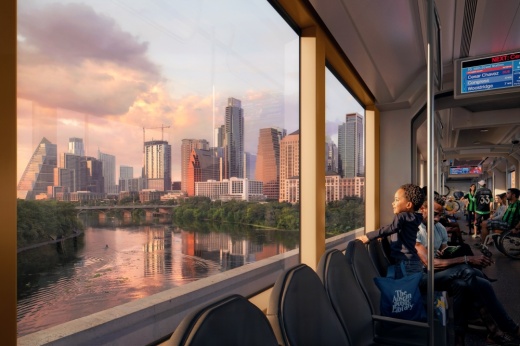The steady hum of rail lines edges closer to reality as the Austin Transit Partnership, responsible for building the city's light rail, issued a multibillion-dollar request for design and construction firms this month.
What's happening?
The agency issued a request for information Feb. 5, which opens a “unique” first step in the final solicitation process, according to Brad Cummings, ATP’s senior vice president of procurement and contract management.
“Because this is such a large project, we are trying to be as collaborative with the industry as possible. We want to foster as much competition as we can, and the only way to really do that is by engaging the industry as early as you can in the process,” Cummings said. “This is something that's really unique to what ATP is doing and how we procure our goods and services—involving the industry as early as possible.”
He explained that often government solicitations, or formal requests for proposals, are developed in a vacuum and then issued without advanced notice. The request for information allows the agency to partner with the industry early. ATP gathers feedback and resolves potential issues before opening solicitations.
ATP's “collaborative approach,” allows firms to bring forward their best pricing and best teams, he said.
This proactive approach led to a higher-than-average response for its recent project management contract with AECOM Technical Services Inc., Cummings said. While most agencies typically receive three or four proposals, ATP received six.
Additionally, AECOM was able to negotiate a very large project in a quick turn around, a few weeks rather than months.Looking ahead
Over the next few months, ATP anticipates receiving responses and inquiries from engineering firms located all over the world.
The agency’s procurement team will gather the firms' input on the formal vetting process, or RFQ, set to launch in June. Staff will assess procedures, timing and draft contracts to streamline negotiations.
Responses will be accepted through March 19.
After making in through the RFQ process, the approved companies will then submit proposals. Cummings anticipates bringing forward a recommended firm before the ATP board in early 2026.
Construction on the light rail is slated to begin in 2027.
One more thing
As part of this process, ATP will host a “Connect and Build: Partnerships for Austin Light Rail” event Feb. 26, offering a networking opportunity related to the final design and construction contract.
“We know there are hundreds of local businesses and over 2,000 in the state of Texas that can help us build Austin light rail. And our goal is to foster those connections early,” Cummings told Community Impact.
He said the event will help connect local and small businesses with subcontracting opportunities for the light rail project, such as design services, cement suppliers, utility servicers and other essential work.
The Austin light rail is expected to create or support hundreds of thousands of jobs.
To register or find out more, click here.





